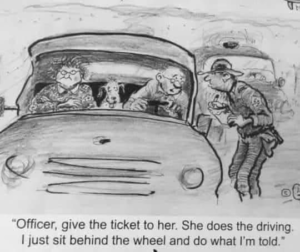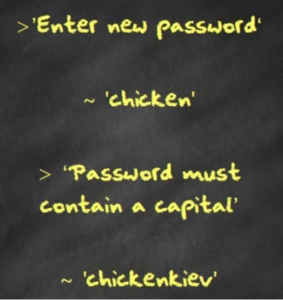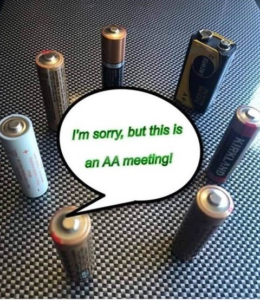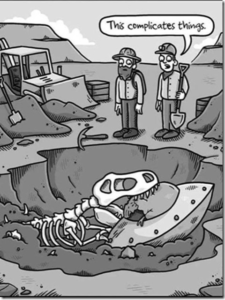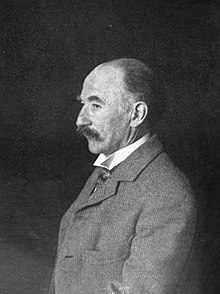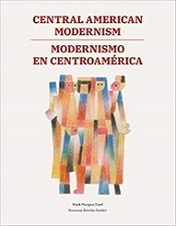For Your Post-Holiday Watching Pleasure…
National Lampoon’s Christmas Vacation (1989)
Directed by Jeremiah S. Chechik
Starring Chevy Chase, Beverly D’Angelo, Randy Quaid, Diane Ladd
Critics: 67% positive; Audience: 86%
Critics Consensus: While Christmas Vacation may not be the most disciplined comedy, it’s got enough laughs and good cheer to make for a solid seasonal treat.
Synopsis: As the holidays approach, Clark Griswold (Chevy Chase) wants to have a perfect family Christmas, so he pesters his wife, Ellen (Beverly D’Angelo), and children, as he tries to make sure everything is in line, including the tree and house decorations. However, things go awry quickly. His hick cousin, Eddie (Randy Quaid), and his family show up unplanned and start living in their camper on the Griswold property. Even worse, Clark’s employers renege on the holiday bonus he needs.

Elf (2003)
Directed by Jon Favreau
Starring Will Ferrell, James Caan, Bob Newhart, Edward Asner
Critics: 85% positive; Audience: 79%
Critics Consensus: A movie full of Yuletide cheer, Elf is a spirited, good-natured family comedy, and it benefits greatly from Will Ferrell’s funny and charming performance as one of Santa’s biggest helpers.
Synopsis: Buddy (Will Ferrell) was accidentally transported to the North Pole as a toddler and raised to adulthood among Santa’s elves. Unable to shake the feeling that he doesn’t fit in, the adult Buddy travels to New York, in full elf uniform, in search of his real father. As it happens, this is Walter Hobbs (James Caan), a cynical businessman. After a DNA test proves this, Walter reluctantly attempts to start a relationship with the childlike Buddy with increasingly chaotic results.

Tangerine (2015)
Directed by Sean Baker
Starring Kitana Kiki Rodriguez, Mya Taylor, Karren Karagulian, Mickey O’Hagan
Critics: 96% positive; Audience: 76%
Critics Consensus: Tangerine shatters casting conventions and its filmmaking techniques are up-to-the-minute, but it’s an old-fashioned comedy at heart – and a pretty wonderful one at that.
Synopsis: After hearing that her boyfriend/pimp cheated on her while she was in jail, a hooker and her best friend set out to find him and teach him and his new lover a lesson.

A Christmas Story (1983)
Directed by Bob Clark
Starring Peter Billingsley, Darren McGavin, Melinda Dillon, Jan Petrella
Critics: 89% positive; Audience: 88%
Critics Consensus: Both warmly nostalgic and darkly humorous, A Christmas Story deserves its status as a holiday perennial.
Synopsis: Based on the humorous writings of author Jean Shepherd, this beloved holiday movie follows the wintry exploits of youngster Ralphie Parker (Peter Billingsley), who spends most of his time dodging a bully (Zack Ward) and dreaming of his ideal Christmas gift, a “Red Ryder air rifle.” Frequently at odds with his cranky dad (Darren McGavin) but comforted by his doting mother (Melinda Dillon), Ralphie struggles to make it to Christmas Day with his glasses and his hopes intact.

Klaus (2019)
Directed by Sergio Pablos
Starring Jason Schwartzman, J.K. Simmons, Rashida Jones, Will Sasso
Critics: 94% positive; Audience: 96%
Critics Consensus: Beautiful hand-drawn animation and a humorous, heartwarming narrative make Klaus an instant candidate for holiday classic status.
Synopsis: A desperate postman accidentally brings about the genesis of Santa Claus.
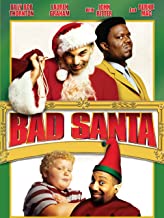
Bad Santa (2003)
Directed by Terry Zwigoff
Starring Billy Bob Thornton, Tony Cox, Brett Kelly, Lauren Graham
Critics: 78% positive; Audience: 75%
Critics Consensus: A gloriously rude and gleefully offensive black comedy, Bad Santa isn’t for everyone, but grinches will find it uproariously funny.
Synopsis: In this dark comedy, the crotchety Willie T. Stokes (Billy Bob Thornton) and his partner (Tony Cox) reunite once a year for a holiday con. Posing as a mall Santa and his elf, they rip off shopping outlets on Christmas Eve. This year, however, Willie is falling apart. He’s depressed and alcoholic, and his erratic behavior draws the suspicion of mall security (Bernie Mac). But when befriending a small boy brings out his kinder side, Willie begins to wonder if there is still some hope for him.
GRANDKID FRIENDLY
March of the Wooden Soldiers (1934)
Directed by Gus Meins, Charley Rogers
Starring Stan Laurel, Oliver Hardy, Charlotte Henry, Felix Knight
Critics: 100% positive; Audience: 78%
Critics Consensus: Not available.
Synopsis: Stannie Dum (Stan Laurel) and Ollie Dee (Oliver Hardy) rent rooms in Mother Peep’s shoe in Toyland. When Mother Peep can’’ make her mortgage payment to evil Silas Barnaby (Harry Kleinbach), he attempts to blackmail her into having Little Bo-Peep (Charlotte Henry) marry him, despite the girl’s attachment to Tom-Tom Piper. Stannie and Ollie offer their assistance to Mother Peep, Bo-Peep, and Piper, and later enlist an army of wooden soldiers to battle Barnaby’s cave-dwelling bogeymen.

A Charlie Brown Christmas (1965)
Directed by Bill Melendez, Phil Roman
Starring Peter Robbins, Christopher Shea, Tracy Stratford, Sally Dryer
Critics: 88% positive; Audience: 81%
Critics Consensus: Not available.
Synopsis: Christmastime is here. Happiness and cheer. And for Peanuts fans everywhere, it just wouldn’t be Christmas without this classic holiday delight. Christmas lights may be twinkling red and green, but Charlie Brown has the Yuletide blues. To get in the holiday spirit, he takes Lucy’s advice and directs the Christmas play. And what’s a Christmas play without a Christmas tree? But everyone makes fun of the short, spindly nevergreen Charlie Brown brings back – until the real meaning of Christmas works its magic once again.

The Muppet Christmas Carol (1992)
Directed by Brian Henson
Starring Michael Caine, Dave Goelz, Steve Whitmore, Jerry Nelson
Critics: 76% positive; Audience: 86%
Critics Consensus: It may not be the finest version of Charles Dickens’ tale to grace the screen, but The Muppet Christmas Carol is funny and heartwarming, and serves as a good introduction to the story for young viewers.
Synopsis: The Muppets perform the classic Dickens holiday tale, with Kermit the Frog playing Bob Cratchit, the put-upon clerk of stingy Ebenezer Scrooge (Michael Caine). Other Muppets – Miss Piggy, Gonzo, Fozzie Bear, and Sam the Eagle – weave in and out of the story, while Scrooge receives visits from spirits of three Christmases – past, present, and future. They show him the error of his self-serving ways, but the miserable old man seems to be past any hope of redemption and happiness.

Frosty the Snowman (1969)
Directed by Jules Bass, Arthur Rankin Jr.
Starring Jimmy Durante, Billy De Wolfe, Jackie Vernon, Paul Frees
Critics: 73% positive; Audience: 72%
Critics Consensus: Frosty the Snowman is a jolly, happy sing-along that will delight children with its crisp animation and affable title character, who makes an indelible impression with his corncob pipe, button nose, and eyes made out of coal.
Synopsis: A discarded magic top hat brings to life the snowman that a group of children made, until a magician, Professor Hinkle, wants it back, and the temperature starts to rise. Frosty will melt or no longer be a jolly soul if the kids cannot get him away from Hinkle and warm weather, so he hops a train to the North Pole with young Karen.

Mickey’s Christmas Carol (1983)
Directed by Burny Mattinson
Starring Alan Young, Wayne Allwine, Hal Smith, Will Ryan
Critics: 100% positive; Audience: 90%
Critics Consensus: Not available.
Synopsis: A retelling of the classic Dickens tale with Disney’s classic characters.

Rudolph the Red-Nosed Reindeer (1964)
Directed by Maury Laws, Larry Roemer
Starring Burl Ives, Larry D. Mann, Billie Mae Richards, Paul Soles
Critics: 95% positive; Audience: 80%
Critics Consensus: Rudolph the Red-Nosed Reindeer is a yuletide gem that bursts with eye-popping iconography, a spirited soundtrack, and a heart-warming celebration of difference.
Synopsis: This stop-motion animagic version of the classic Christmas tale adds a bit of a twist when Rudolph encounters an abominable snowman.

How the Grinch Stole Christmas (1966)
Directed by Chuck Jones
Starring Boris Karloff, June Foray, Thurl Ravenscroft, Eugene Poddany
Critics: 100% positive; Audience: 95%
Critics Consensus: How the Grinch Stole Christmas brings an impressive array of talent to bear on an adaptation that honors a classic holiday story – and has rightfully become a yuletide tradition of its own.
Synopsis: This made-for-TV Christmas special is a classic. Based on a Dr. Seuss book, it is about a Christmas-hating Grinch who wants to make everyone as miserable on Christmas as he is. The poor, small-hearted Scrooge learns the true meaning of Christmas through the loving Whos in Whoville.
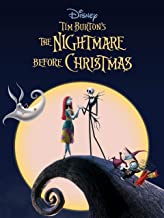
The Nightmare Before Christmas (1993)
Directed by Tim Burton
Starring Danny Elfman, Chris Sarandon, Catherine O’Hara, William Hickey
Critics: 95% positive; Audience: 91%
Critics Consensus: The Nightmare Before Christmas is a stunningly original and visually delightful work of stop-motion animation.
Synopsis: The film follows the misadventures of Jack Skellington, Halloweentown’s beloved pumpkin king, who has become bored with the same annual routine of frightening people in the “real world.” When Jack accidentally stumbles on Christmastown, all bright colors and warm spirits, he gets a new lease on life: He plots to bring Christmas under his control by kidnapping Santa Claus and taking over the role. But Jack soon discovers even the best-laid plans of mice and skeleton men can go seriously awry.
ODDBALL/ARTSY/SCARY
Tokyo Godfathers (2003)
Directed by Satoshi Kon
Starring Yoshiaki Umegaki, Aya Okamoto, Toru Emori
Critics: 91% positive; Audience: 91%
Critics Consensus: Beautiful and substantive, Tokyo Godfathers adds a moving – and somewhat unconventional – entry to the animated Christmas canon.
Synopsis: Middle-aged alcoholic Gin (Toru Emori), teenage runaway Miyuki (Aya Okamoto) ,and former drag queen Hana (Yoshiaki Umegaki) are a trio of homeless people surviving as a makeshift family on the streets of Tokyo. While rummaging in the trash for food on Christmas Eve, they stumble upon an abandoned newborn baby in the bin. With only a handful of clues to the baby’s identity, the three misfits search the streets of Tokyo for help in returning the baby to its parents.

Tokyo Godfathers (2003)
Directed by Satoshi Kon
Starring Yoshiaki Umegaki, Aya Okamoto, Toru Emori
Critics: 91% positive; Audience: 91%
Critics Consensus: Beautiful and substantive, Tokyo Godfathers adds a moving – and somewhat unconventional – entry to the animated Christmas canon.
Synopsis: Middle-aged alcoholic Gin (Toru Emori), teenage runaway Miyuki (Aya Okamoto) ,and former drag queen Hana (Yoshiaki Umegaki) are a trio of homeless people surviving as a makeshift family on the streets of Tokyo. While rummaging in the trash for food on Christmas Eve, they stumble upon an abandoned newborn baby in the bin. With only a handful of clues to the baby’s identity, the three misfits search the streets of Tokyo for help in returning the baby to its parents.

Rare Exports: A Christmas Tale (2010)
Directed by Jalmari Helander
Starring Onni Tommila, Jorma Tommila, Ilmari Järvenpää, Peeter Jakobi
Critics: 90% positive; Audience: 70%
Critics Consensus: Rare Exports is an unexpectedly delightful crossbreed of deadpan comedy and Christmas horror.
Synopsis: A young boy named Pietari (Onni Tommila) and his friend Juuso (Ilmari Järvenpää) think a secret mountain drilling project near their home in northern Finland has uncovered the tomb of Santa Claus. However, this is a monstrous, evil Santa, much unlike the cheery St. Nick of legend. When Pietari’s father (Jorma Tommila) captures a feral old man (Peeter Jakobi) in his wolf trap, the man may hold the key to why reindeer are being slaughtered and children are disappearing.
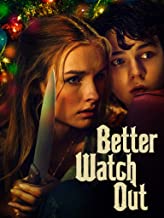
Better Watch Out (2016)
Directed by Chris Peckover
Starring Levi Miller, Olivia DeJonge, Ed Oxenbould, Dacre Montgomery
Critics: 89% positive; Audience: 65%
Critics Consensus: Carried by its charismatic young cast, Better Watch Out is an adorably sinister holiday horror film.
Synopsis: Ashley travels to the suburban home of the Lerners to baby-sit their 12-year-old son Luke at Christmastime. She must soon defend herself and the young boy when unwelcome intruders announce their arrival.
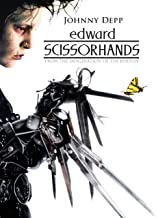
Edward Scissorhands (1990)
Directed by Tim Burton
Starring Johnny Depp, Winona Ryder, Dianne Wiest, Anthony Michael Hall
Critics: 90% positive; Audience: 91%
Critics Consensus: The first collaboration between Johnny Depp and Tim Burton, Edward Scissorhands is a magical modern fairy tale with gothic overtones and a sweet center.
Synopsis: A scientist (Vincent Price) builds an animated human being – the gentle Edward (Johnny Depp). The scientist dies before he can finish assembling Edward, though, leaving the young man with a freakish appearance accentuated by the scissor blades he has instead of hands. Loving suburban saleswoman Peg (Dianne Wiest) discovers Edward and takes him home, where he falls for Peg’s teen daughter (Winona Ryder). However, despite his kindness and artistic talent, Edward’s hands make him an outcast.

Anna and the Apocalypse (2017)
Directed by John McPhail
Starring Ella Hunt, Malcolm Cumming, Sarah Swire, Christopher Leveaux
Critics: 77% positive; Audience: 62%
Critics Consensus: Anna and the Apocalypse finds fresh brains and a lot of heart in the crowded zombie genre – not to mention a fun genre mashup populated by rootable characters.
Synopsis: A zombie apocalypse threatens the sleepy town of Little Haven – at Christmas – forcing Anna and her friends to fight, slash, and sing their way to survival, facing the undead in a desperate race to reach their loved ones. But they soon discover that no one is safe in this new world, and with civilization falling apart around them, the only people they can truly rely on are each other.

